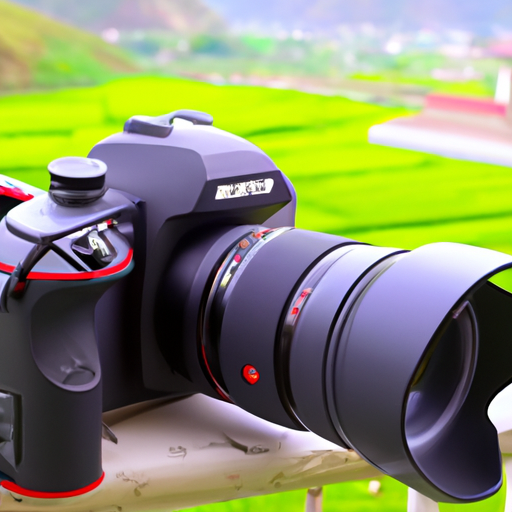Table of Contents
- Introduction
- How to Choose the Right Camera and Lens for Professional Photography
- Tips for Lighting and Posing for Professional Photos
- How to Use Props and Backgrounds to Enhance Professional Photos
- How to Edit Professional Photos for Maximum Impact
- How to Create a Professional Photography Portfolio
- Conclusion
«Capture the Moment – Get the Perfect Professional Photo!»
Introduction
Taking a good professional photo is an important skill to have in today’s digital world. Whether you are a business professional, a student, or just someone who wants to look their best in photos, having a good professional photo can make a big difference. In this guide, we will discuss the basics of taking a good professional photo, from choosing the right equipment to posing for the camera. We will also discuss tips for editing and retouching your photos to make them look even better. With the right knowledge and practice, you can take a great professional photo that will make you look your best.
How to Choose the Right Camera and Lens for Professional Photography
Choosing the right camera and lens for professional photography can be a daunting task. With so many options available, it can be difficult to know which combination will best suit your needs. To help you make the right decision, here are some tips for selecting the right camera and lens for professional photography.
First, consider the type of photography you will be doing. Different types of photography require different types of cameras and lenses. For example, if you are shooting landscapes, you will need a wide-angle lens and a camera with a large sensor. If you are shooting portraits, you will need a telephoto lens and a camera with a high resolution.
Second, consider the features you need. Different cameras and lenses have different features, so it is important to consider what features you need for your photography. For example, if you are shooting in low light, you may need a camera with a high ISO range. If you are shooting sports, you may need a camera with a fast shutter speed.
Third, consider your budget. Professional photography can be expensive, so it is important to consider your budget when selecting a camera and lens. You may be able to find a great camera and lens combination that fits within your budget.
Finally, consider the brand. Different brands offer different features and quality, so it is important to research the different brands before making a purchase. You may find that one brand offers the features you need at a lower price than another.
By following these tips, you can ensure that you select the right camera and lens for professional photography. With the right combination, you can create stunning images that will impress your clients.
Tips for Lighting and Posing for Professional Photos
1. Choose the Right Lighting: Natural light is often the best choice for professional photos, as it is soft and flattering. If you are shooting indoors, try to find a room with large windows and plenty of natural light. If you are shooting outdoors, try to find a spot with even, diffused light. Avoid direct sunlight, as it can create harsh shadows and unflattering highlights.
2. Use Reflectors: Reflectors are a great way to add light to your photos and create a more even, balanced look. You can use a white reflector to bounce light back onto your subject, or a silver reflector to add more contrast.
3. Experiment with Angles: Don’t be afraid to experiment with different angles and perspectives. Try shooting from above, below, or from the side to create interesting and unique shots.
4. Pose Your Subject: Posing your subject can help create a more flattering and professional look. Have your subject stand up straight, with their chin slightly tilted up and their shoulders back. Have them place their hands on their hips or at their sides.
5. Use Props: Props can help add interest and depth to your photos. Try using a chair, a stool, or a ladder to create interesting poses and perspectives.
6. Have Fun: Above all, have fun with your photos! Don’t be afraid to experiment and try new things. You never know what you might come up with!
How to Use Props and Backgrounds to Enhance Professional Photos

Using props and backgrounds can be a great way to enhance professional photos and create a unique look. Props and backgrounds can be used to add interest, create a mood, and draw attention to the subject of the photo. Here are some tips for using props and backgrounds to enhance professional photos.
1. Choose props and backgrounds that complement the subject. When selecting props and backgrounds, consider the colors, textures, and shapes that will best complement the subject of the photo. For example, if the subject is wearing a bright red dress, choose props and backgrounds that will bring out the color of the dress.
2. Use props to add interest. Props can be used to add interest to a photo and draw attention to the subject. Consider using props that are related to the subject, such as a book or a musical instrument.
3. Use backgrounds to create a mood. Backgrounds can be used to create a certain mood or atmosphere in a photo. Consider using a background that will help to set the tone of the photo, such as a beach or a forest.
4. Use lighting to enhance the photo. Lighting can be used to enhance the colors and textures of the props and backgrounds. Consider using natural light or artificial light to create the desired effect.
By following these tips, you can use props and backgrounds to enhance professional photos and create a unique look. With the right props and backgrounds, you can create a stunning photo that will stand out from the rest.
How to Edit Professional Photos for Maximum Impact
Editing professional photos for maximum impact requires a keen eye and a thorough understanding of the principles of photography. Professional photographers use a variety of techniques to ensure that their images are of the highest quality and have maximum impact. Here are some tips for editing professional photos for maximum impact.
1. Adjust the Exposure: The exposure of a photo is one of the most important elements to consider when editing. Adjusting the exposure can help to bring out the details in the image and create a more dynamic look.
2. Adjust the Contrast: Contrast is the difference between the lightest and darkest areas of an image. Adjusting the contrast can help to bring out the details in the image and create a more dramatic look.
3. Adjust the Color Balance: Color balance is the relationship between the colors in an image. Adjusting the color balance can help to create a more natural look and bring out the colors in the image.
4. Adjust the Sharpness: Sharpness is the clarity of an image. Adjusting the sharpness can help to bring out the details in the image and create a more professional look.
5. Adjust the White Balance: White balance is the relationship between the colors in an image. Adjusting the white balance can help to create a more natural look and bring out the colors in the image.
6. Adjust the Vignette: Vignetting is the darkening of the edges of an image. Adjusting the vignette can help to create a more dramatic look and draw attention to the subject of the image.
7. Adjust the Clarity: Clarity is the sharpness of an image. Adjusting the clarity can help to bring out the details in the image and create a more professional look.
By following these tips, you can ensure that your professional photos have maximum impact. With a little practice and patience, you can create stunning images that will be sure to impress.
How to Create a Professional Photography Portfolio
Creating a professional photography portfolio is an important step for any photographer looking to showcase their work and attract new clients. A portfolio should be a reflection of your style and skill as a photographer, and should be tailored to the type of photography you specialize in. Here are some tips for creating a professional photography portfolio.
1. Choose the Right Platform: There are many different platforms available for creating a portfolio, such as WordPress, Squarespace, and Adobe Portfolio. Choose the one that best suits your needs and is easy to use.
2. Select Your Best Work: Your portfolio should only include your best work. Choose images that showcase your style and skill as a photographer.
3. Include Variety: Include a variety of images in your portfolio to show potential clients the range of your work.
4. Use High-Quality Images: Make sure the images you include in your portfolio are of the highest quality. Poor quality images will reflect poorly on your work.
5. Include Captions: Include captions for each image to provide context and explain the story behind the image.
6. Keep it Up-to-Date: Make sure to regularly update your portfolio with new images and remove any outdated images.
Creating a professional photography portfolio is an important step for any photographer looking to showcase their work and attract new clients. By following these tips, you can create a portfolio that accurately reflects your style and skill as a photographer.
Conclusion
Taking a good professional photo requires careful planning and preparation. It is important to consider the lighting, background, and clothing that will be used in the photo. Additionally, it is important to practice posing and facial expressions to ensure that the photo looks natural and professional. Finally, it is important to use a quality camera and lens to ensure that the photo is of the highest quality. With these tips in mind, anyone can take a great professional photo.

































